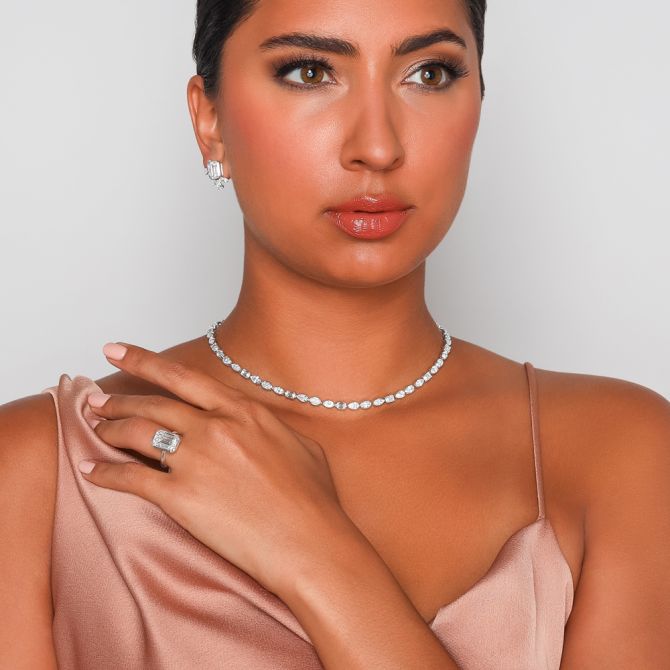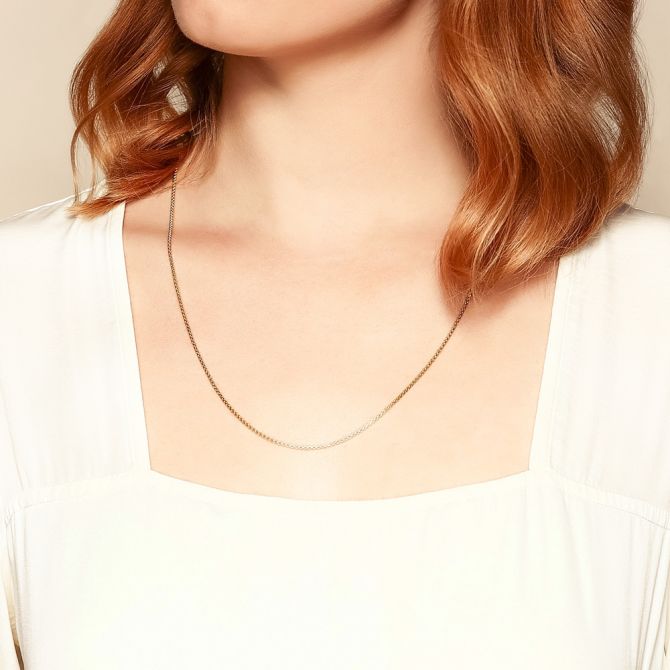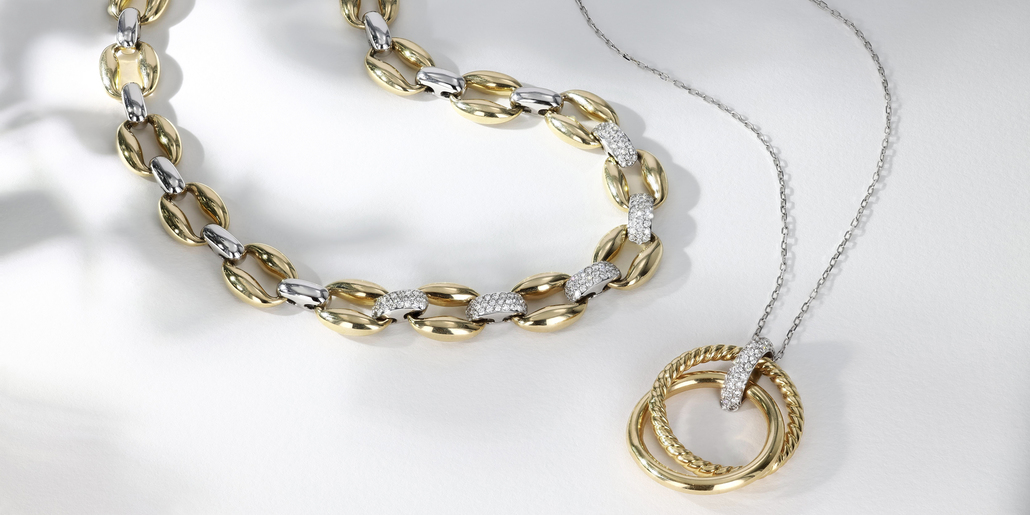They may all share a spot on your neck, but necklaces, pendants and chains each have their own style and purpose. Keep reading to find out what sets each piece apart and how they work together.
What Is a Necklace?
A necklace is the complete, ready-to-wear piece: the chain plus any decorative element that may or may not be attached. It’s essentially the umbrella term for any jewelry worn around the neck.
A necklace can be anything from:
- A gold chain
- A diamond tennis necklace
- A pearl strand
- A chain with an attached charm, locket or gemstone
Necklaces come in endless lengths and styles: chokers, princess length, matinee, opera and more. With most necklaces, the design is cohesive and complete right out of the box.

What Is a Pendant?
A pendant is the decorative element that hangs from a chain. It’s not the entire piece, just the charm, gemstone or drop that becomes the centerpiece.
Common pendant styles include:
- Diamond solitaires
- Birthstones
- Lockets
- Religious symbols
- Gemstone clusters
- Initials or monograms
Pendants attach to chains using a bail (the small loop at the top), which allows the pendant to slide freely and sit comfortably at the center.
A pendant’s purpose is to bring personality, meaning or sparkle to a chain. That versatility is exactly why they’re so loved. You can move them from one chain to another, switch up the length, or layer them with other pieces for a different look.

What Is a Chain?
A chain is the linked metal strand that sits around your neck. It can be worn in three ways:
- On its own
- Paired with a pendant to create a pendant necklace
- As a base piece for layering with other chains or pendants
Not all chains are the same, and their style determines whether they’re best for standalone wear, holding pendants or layering.
Popular chain types include:
- Ball
- Box
- Cable
- Cord
- Figaro
- Link
- Rolo
- Rope
- Snake
- Wheat
Learn more about each style in our Chain Guide.

Not every chain works for every purpose. Here’s what separates a pendant-friendly chain from one that’s better worn solo.
Chains for Pendants
These chains are designed to support a hanging element. Look for:
- Strength without bulk (box, wheat and cable chains)
- Smooth movement so the pendant slides easily
- Balanced proportions
- Adjustable lengths for different outfits and necklines
A pendant-perfect chain is slender, flexible and subtle, so all eyes go to the pendant.

Chains crafted to hold their own tend to be:
- More substantial, like paperclip, rope and Figaro chains
- Decorative with unique link shapes
- Structured to hold their shape
- Less flexible for swapping pendants
These chains look complete by themselves, so adding a pendant usually throws off the design.

Pendant vs Necklace vs Chain
The main points to remember are that all pendant necklaces include a chain, but not all necklaces have pendants, and while all chains are necklaces, not all necklaces are simply chains.
How to Choose Between a Necklace, Pendant or Chain
A necklace is a classic jewelry piece. Choose it if you want:
- A strand of pearls or diamonds
- A chain style that doesn’t require a pendant
A pendant necklace turns a chain into something uniquely yours. Choose it if you want:
- Personalization
- A necklace you can style in multiple ways
- A go-to gift
Every jewelry box needs a chain. Choose it if you want:
- An everyday piece
- A base for stacking and layering
- The option to add different pendants later

